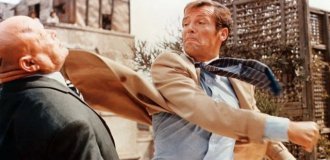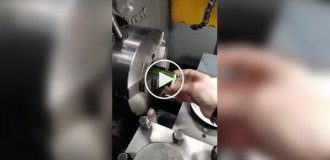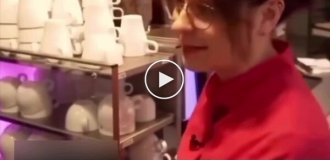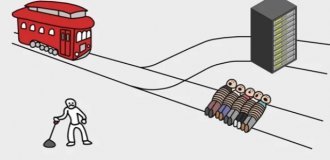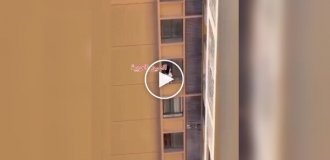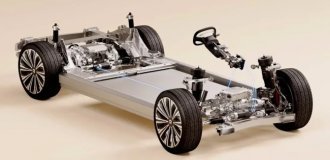Nowadays you can often hear stories about how bad life was in the USSR. Weeping stories tell of salaries of 120 rubles, which supposedly were not enough for anything, and of huge queues caused by a shortage of almost all goods. One netizen, who saw those very times already at a conscious age, decided to put everything in order, remembering what the salary actually was, what it was enough for and what the prices were.
Further words from the author:

You can see 120 rubles only if you set yourself such a task. So you have to lie. Or do a substitution: take the salary of a young, newly graduated engineer (or accountant) and extrapolate it to the whole country. You can keep silent about other categories - and feed the whole people with fairy tales. A lie diluted with truth is more convincing than a banal lie.
In fact.
Average monthly wages of workers and employees by sectors of the national economy (rubles)

This does not include collective farmers, because They are not employees of state enterprises. Therefore, I will give a separate table, it is divided by republic.
Average monthly wages of collective farmers in public farming by Union republics (rubles)

Since it is difficult to directly compare those salaries and those prices with the current ones, you need to look at “what is what?”
On different sites it is approximately the same, the only difference is the quantity of the mentioned assortment.
From my own observations to the general collection:
- the scholarship at universities was 40 rubles, at our faculty 70 rubles. I received 87.50 rubles.
- lunch in the university canteens of Leningrad State University cost me a maximum of 80 kopecks: salad, first course, second course with meat (goulash, Tatar azu, some other delicacies), compote, bread. The most expensive dish was pilaf - 44 kopecks. Almost twice as expensive as the other second course.
- a plane ticket Leningrad - Murmansk cost me, a student, 18 rubles (regular - 25 rubles). I could fly twice round trip with a scholarship and once by taxi Pulkovo-Peterhof (10 rubles in 1988-89, 16 rubles in 90 -m - the rise in price has already begun)
- in the subway you put in not a token, but a 5-kopeck coin. They are 5 kopecks and in Africa they are 5 kopecks. But the value of the token can be changed. That's why they were introduced after the USSR.
- cigarettes for 50 kopecks per pack, in a hard pack for 20 kopecks. more expensive: "Cosmos", Bulgarian "VT". Without the filter "Prima", "Vatra", etc. 10 (or 12, I forgot) kopecks. Cigarettes are even cheaper.
- Movie tickets cost 15-20 kopecks, we didn’t even pay attention to such expenses.
- Meteors, Rockets, etc. went along the rivers - on the Oka and Volga, the fare, in my opinion, was 15 kopecks. They were used not as tourist transport, but as ordinary transport: Gorky-Dudenevo, for example.
- I remember smoked sausage for 9 rubles. per kg
- beer: in Leningrad 50 kopecks per bottle, in Riga - 46 kopecks. Return the bottle and return 20 kopecks.
- for the hostel they paid a ruble or two something a month.
- sit in a restaurant with port wine and kebabs - 5 rubles per nose (on the corner of Gorokhovaya and Sadovaya)
- my grandmother received a pension of 105 rubles (she left 5 years later (in 1983) - so it would have been 100). Accountant at an artificial leather factory. Not chief and not deputy. Ordinary. Not in the North.
Cheapest purchases:
1 kopeck. A box of matches, a glass of sparkling water without syrup, the newspaper "Pionerskaya Pravda", a pencil, a piece of bread in the dining room, 2 celluloid picks for playing the guitar, Thermopsis cough tablets
2 kopecks. Conversation on a pay phone, a set of hooks and loops (10 pairs), monthly Komsomol membership dues, a bullet in a shooting range, a condom, a newspaper, tea with sugar in the canteen and cafe, a school notebook (12 sheets)
3 kopecks. A glass of sparkling water with syrup, a glass of kvass from a barrel, travel on a tram, newspapers, a glass of tea in a cafe, a pencil with an eraser, a jar of mayonnaise, a Kuntsevskaya bun
4 kopecks. Electricity for 1 kW/hour, travel on a trolleybus, bus, a button for a Pioneer shirt, brilliant green, liver pie, the newspaper "Pravda", tooth powder "Children's"
5 kopecks. Subway fare, a bunch of dill or parsley, a ride on the Ferris wheel, a children's book, a fresh toasted bagel, a pie with jam, a resistor of any value and any power, a table tennis ball, Mint tooth powder, a quarter of black bread, a glass of kvass from machine gun (in the 1980s), a book from the Crocodile library, a jar of Vaseline (iron)
5-10 kopecks. Salt 1 kg, a glass of sunflower seeds
6 kopecks. A large mug of kvass from a barrel, a postcard, loose cutlets per piece, a bagel bun, a bagel with poppy seeds, contour cards (grade 3, grade 5), “Special” tooth powder, vitamin C
7 kopecks. Popsicles in a paper cup, Sherbet ice cream, table tennis ball, haircut, salad in the dining room, 3.5 V light bulb, French bun, city bun, puff pastry with sugar, short cigarettes "Southern", cigarettes " Miners"
8 kopecks. Tula gingerbread, milk shortbread, notepad, glass of birch sap, bun with jam or poppy seeds, ballpoint pen
9 kopecks. A high-calorie bun, a pie with potatoes in cafes and canteens, a ruler, Milk ice cream, a plastic school triangle, a movie ticket for a morning show
10 kopecks. Ice cream "Berry", a glass of tomato juice, a sandwich with boiled sausage in a cafe, 1 kg of potatoes, a bottle of sparkling water "Bell", "Buratino", an empty jar of mayonnaise, taxi fare 1 km. (before 1973), a pack of snuff, a button for a school uniform, outline cards (grades 8-9), cosmetic Vaseline "Mink", a hematogen tile, mustard plasters, string (3 pcs., synthetic/metal), snuff ( 50 g), photographic film for a “spy” camera, paper clips (100 pcs.)
11 kopecks. Belyash with meat in a cafe and canteen, a literary newspaper, a household centimeter, a notebook for music, Eskimo ice cream
12 kopecks. 1 kg of carrots, children's soap "Strawberry", an empty soda bottle (0.5 l.), an empty vodka bottle, an atlas of the history of the USSR (8th grade), a television plug (antenna), half a glass of sour cream in the cafeteria, a comb for children cinema ticket
13 kopecks. Loaf of white bread
14 kopecks. Milk cocktail, cigarettes without filter "Prima", "Astra", "Pamir", "Aurora", cut glass, round rye bread, school diary
15 kopecks. Ice cream "Slivochnoe", watermelon for 1 kg, a trip in a minibus, processed cheese "Druzhba" 62 g, cigarettes "Prima", an Olympic bear badge, a glass of grape juice, an empty bottle of kefir, one game in the slot machine, a glass of pumpkin seeds , a temporary unit of conversation in a long-distance pay phone
16 kopecks. Flour 1 kg, triangular package of milk 0.5 l, black bread, Astra cigarettes, awl, cheburek, cupcake with raisins in the dining room
17 kopecks. Element 373 battery, empty wine bottle, New Year's card with envelope, electrical plug (plastic), Rainbow ink for fountain pens (bottle)
18 kopecks. A loaf of white bread "Podmoskovny", ice cream "Gourmand", sparklers (10 pcs.), a pack of cigarettes with a "Novost" filter, a sterile dressing bag, a square 23 cm.
19 kopecks Ice cream sundae in a cup
20 kopecks. Ice cream sundae in a waffle cup, ice cream in a waffle cup with a cream rose (GUM, TSUM), white bread in tracing paper "Sdobny", 1 liter of milk from a barrel, school breakfast without first, World Cup badge, plastic Santa Claus (small), clothespin , fly swatter, knitting needle (small), Dymok cigarettes, daisy hairpin, empty champagne bottle, ballpoint pen, aluminum spoon, Alenka chocolate bar (15 g), 1 km. by taxi.
And most importantly, money was not the main thing. There was enough money for everything we needed.
P.S. a friend suggested details about the salary of 120 rubles:
"And to finish the topic, 120 rubles. Many say that he or his parents had a salary/rate of 120 rubles. Here they are absolutely right: many rates started with this figure. But this was only the salary rate. The salary was, as usually 1.5 times higher. What did it consist of: "

“The salary was 55-60% of the entire salary of a Soviet engineer. That is, if your salary was 120 rubles, then you received 180-190 rubles in your hands. This is exactly what happened to me in 1986, when I worked in a factory design bureau, where my salary was 156 rubles, and I received from 180 to 260 rubles per month. And, by the way, we didn’t have any equalization..."


Here, obviously, there is a communal apartment: for 11 people 43.40 rubles. If divided equally, then almost 4 rubles per person.


